When couples separate or divorce, there are three major issues they need to resolve: division of their family property; continued parenting of their children, and; financial support. Financial support involves two issues: child support and spousal support. Child support can be relatively straightforward – child support is the right of the child, payable by both parents according to their incomes and the number of children to support. Spousal support can be more complicated, however, often being the ‘elephant in the room’: some spouses don’t want to claim it; some spouses don’t want to pay it; some spouses don’t even want to talk about it. But both child support and spousal support may become even more difficult to resolve, particularly when dealing with high-income parents.
The Presumptive Amount
So, how do you calculate child and spousal support, particularly for high-income parents? For child support, the Federal or provincially regulated Child Support Guidelines (the “Guidelines”) set out a presumptive amount of child support payable for base (ie. food, clothing and shelter) child support based on the payor parents’ incomes. For spousal support, the Spousal Support Advisory Guidelines (SSAGs) set out a range of possible spousal support payments depending on the incomes of both the payor and recipient spouses. But both the Guidelines and the SSAGs have points over which the amount of child or spousal support payable by high-income parents are no longer presumed to be paid: income over $150,000 under the Guidelines for child support, and income over $350,000 under the SSAGs for spousal support. Over these incomes, the amount of income upon which the child or spousal support is to be calculated becomes more discretionary.
High-Income Child Support
The test for varying from the presumptive amount of child support determined by the Guidelines was set out in the Supreme Court of Canada case of Francis v. Baker ([1999] 2 SCR 250) and the Alberta Court of Appeal case of Ewing v. Ewing (2009 ABCA 227), the later confirming (at para. 46):
“The party seeking the deviation must provide enough evidence so as to ‘raise a concern’ that awarding the table amount would be inappropriate. This evidence must be ‘clear and compelling’ and include an accurate picture of the Child’s condition, means, needs and circumstances.”
Simple, right? Perhaps not so much. Fortunately, subsequent Alberta cases have shed some light on the limits of discretion to be applied by the courts and arbitrators when deciding the amount of child and spousal support to be paid by high-income spouses. In the recent case of Martinez v. Nichols (2024 ABCJ 77), Justice D. Mah ordered a father with an imputed income of $2M to pay child support for one child on the Guideline Table amount of $7,140/mo., noting (at para. 38): This decision highlights that the Guideline Table amounts serve as a crucial starting point, even for those with substantial incomes, to ensure consistency and fairness in support calculations. Justice Mah emphasized that the cost of getting a divorce should not disproportionately burden the custodial parent or compromise the child’s standard of living. Ultimately, the court underscored the need to balance high-income earners’ obligations with the legislative intent to protect children’s financial well-being.
“… I am mindful, however, that such a rigid application of the Federal Guidelines table may result in child support payments far exceeding a child’s reasonable needs and would result in a simple transfer of wealth. Both s.4(b) of the Federal Guidelines as well as jurisprudence have recognized the right of the Court to exercise its discretion to ensure that the table amounts are neither inappropriate nor otherwise unsuitable (Francis v. Baker).”
The Guidelines set a “floor” income of $20,000 under which the payor parent is not obligated to pay child support. But is there a “ceiling” income (for either child or spousal support) over which income is not taken into account for financial support purposes? Technically, no. However, in the recent case of Wanchuk v. Wanchuk (2023 ABKB 121), Justice L.K. Harris, in ordering a father to pay child support based on an income marginally over the $150k Guideline threshold, held (at para. 55):
“This is not a case where this is a functional wealth transfer. Bastarache J. noted in Francis that sometimes, ‘the applicable Guideline figure is so in excess of the children’s reasonable needs that it may be considered to be a functional wealth transfer to a parent or de facto spousal support’. This case is not comparable. Cases involving considerations of wealth transfer arise due to parental income in excess of $1.0 million per year.”
High-Income Spousal Support
But do these principles also apply to a determination of income for estimated spousal support under the SSAGs? Again, not directly. However, in the recent Alberta case of Sorenson v. Sorenson (2020 ABQB 737), Justice T.G. Rothwell indicated that in addition to looking at the usual factors and considerations in awarding spousal support (the health, income, assets and budget of the spouse seeking support, etc.), in cases of high-income earners, the Court should also consider an amount that would allow the recipient spouse to “enjoy a lifestyle that is closer to her pre-separation lifestyle” (at para. 135). Perhaps more specifically, in the 2019 Alberta case of Vallieres v. Butt (2019 ABQB 940), Justice P.R. Jeffrey noted (at para. 43):
“The SAGG self-describe as generating less reliable calculations for payor incomes above $350,000. The farther incomes are above that ceiling, they report, the greater the tendency for past court-determined spousal support awards to fall in the low-to-mid range for amount. In that regard, the commentary to the SSAG state:
It is wise to calculate the ranges for alternative income levels: for the $350,000 ceiling (as a minimum) and for the full income (as a maximum), as well as for a range of intermediate incomes (to assist … in triangulating an outcome).”
Accordingly, from the caselaw, some very broad generalizations may be taken regarding determining the level of income to be used in setting child and spousal support for high-income earners, namely:
● the “ceiling” amounts are not an absolute cap on income for support purposes. Income for support purposes is unlikely to be varied unless that income starts to be in the $600k to $1m range – the closer to the $150/350k “ceilings”, the less likely the amount will be varied;
● a “cap” on income for child support purposes is unlikely to be looked at until that income reaches over $1M (Wanchuk);
● the more a payor’s income for spousal support purposes goes over the $350k presumptive amount, the more the tendency to set spousal support toward the lower end of the SSAG range.
So, is the basic purpose of both child and spousal support to meet the needs of the child and the former spouse post-separation? Of course. However, in regard to high-income parents and spouses, the amount of that support is not only the amount needed to pay the minimum needs of the children or former spouse. For child support, the amount should not be inappropriate to the actual needs of the child. For spousal support, the amount should be closer to an amount to allow the former spouse to enjoy a lifestyle close to their “pre-separation lifestyle”.


We currently have three offices across Alberta — Edmonton, Calgary, and Red Deer. We serve the entire province of Alberta (and BC). We also have the infrastructure to work with any of our clients virtually — even the furthest regions of Alberta.
Call 1 (855) 892-0646 (toll free) to get routed to the best office for you or contact us online for general inquiries.
We also have a dedicated intake form to help you get the ball rolling. Our intake team will review your specific case and advise you on the next steps to take as well as what to expect moving forward. That’s the best way to schedule an appointment
Our offices are generally open 8:30 a.m.—4:30 p.m., Mon—Fri.
The Legal Review Process by Spectrum Family Law
- Spectrum strives for high-quality, legally verified content.
- Content is meticulously researched and reviewed by our legal writers/proofers (usually local law students).
- Details are sourced from trusted legal sources like the Family Law Act.
- Each article is edited for accuracy, clarity, and relevance.
- If you find any incorrect information or discrepancies in legal facts, we kindly ask that you contact us with a correction to ensure accuracy.



